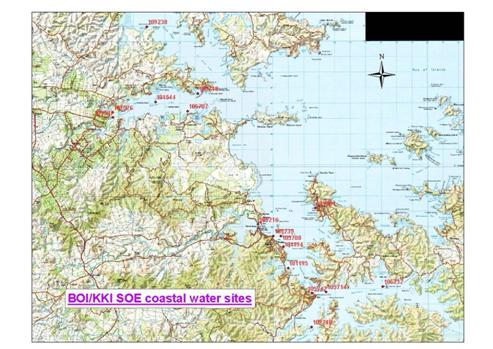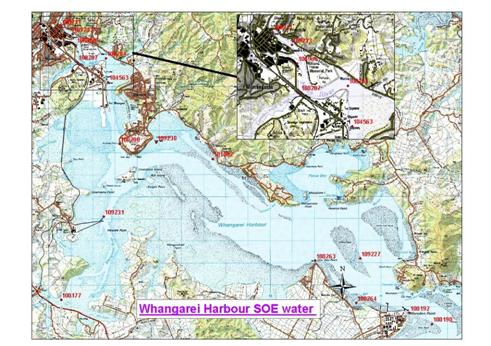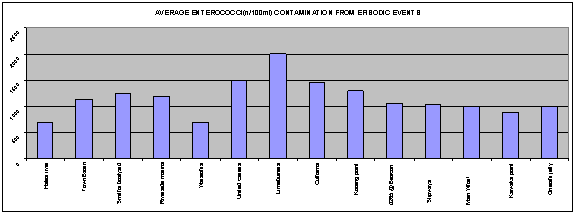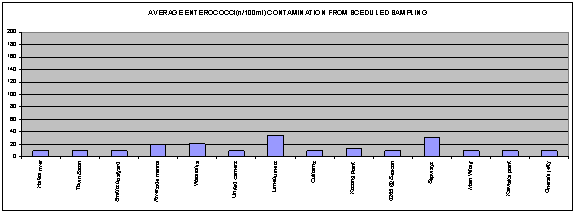Harbour Water Quality and Sediment Monitoring
Within this section…
During 2007-08, NRC and NIWA undertook a review of the marine water and seabed sediment quality monitoring programme carried out in the Bay of Islands (BOI) and Whangarei harbours. This review was achieved utilising Envirolink funding.
Key recommendations from the review included:
· Re-designing the monitoring programme to produce more accurate results that are easier to interpret and which increase confidence in detecting changes in environmental quality over time;
· Increasing monitoring to detect temporal and spatial trends at study sites;
· Establishing historic trends in sedimentation and contamination rates; and
· Developing ‘regional response' trigger values to avoid contaminant levels exceeding ANZECC guideline values.
A revised state of the environment monitoring programme has now been designed. The programme has been tailored to address the following issues:
· Levels of contaminants in fine sediments near urban and industrial areas;
· Bacterial (microbial) contamination in coastal waters from human and animal effluent, predominantly in areas of low tidal flushing and high density mooring areas;
· Nutrient enrichment of coastal waters and sediments; and
· Sediment loading and its affect on seabed and physical water quality parameters.
The programme requires external laboratory analysis of water and sediment samples. The programme is being implemented in stages in accordance with the available budget. The water sampling programme for 2007-08 involved monitoring 32 sites, 16 in the Whangarei harbour and 16 in the BOI.

Map: Water and sediment quality monitoring sites in the Bay of Islands

Map: Water and sediment quality monitoring sites in the Whangarei harbour
Additional parameters that are now being sampled include Enterococci bacteria, phosphorous, ammonia and nitrogen. Whilst the number of parameters has increased, the sampling frequency has decreased, with the addition of occasional (episodic) sampling after heavy rainfall events. Depth profiling of the physical properties of harbour waters has also commenced, which utilises remote monitoring equipment. Data from this monitoring may be used to increase our understanding of the way contaminants move (are transported) around the harbour systems.
Episodic sampling
During 2007-08, a number of episodic sampling runs were undertaken in the Whangarei harbour, following heavy rainfall events. Results from this sampling show significant microbial contamination in the upper harbour after heavy rain. The graphs below give the results from episodic and scheduled sampling for the Whangarei Harbour for 2007-08.


According to the MfE Microbiological Water Quality Guidelines, a median result of greater than 277 Enterococci per 100ml of sea water means the water is unsafe for recreational contact. In order to minimise the potential for adverse human health impacts, it may be necessary to classify these waters as ‘unsafe' for contact recreation after heavy rainfall events.
NZRC
A review of the New Zealand Refining Company (NZRC) monitoring programme has been undertaken by NRC and NZRC employees. The revised programme is now being implemented. Significant changes to the coastal component of programme include extending the suite of contaminants analysed for, increasing the spatial distribution of sites and commencing stormwater basin sediment sampling.
Harbour model
In 2007-08, NRC invited the submission of proposals for the development of a hydrodynamic dispersion model for the Whangarei Harbour and modelling of specified microbial contamination scenarios.
Specific issues to be addressed in the model include:
· What are the dispersion rates and residence time of microbial contaminants in the harbour, arising from specified point source and diffuse discharges?
· What are the implications of significant freshwater inputs on the dispersion rates and residence times of contaminants?
· What are the likely impacts of these contaminant discharges on water and shellfish in terms of suitability for use?
The modelling exercise for Whangarei Harbour is proposed in two stages. The first stage generates a coarse model and is focused on microbial contaminants, with the second stage developing a finer scale model which incorporates additional contaminants.
